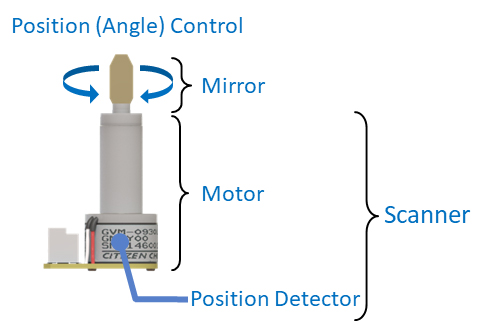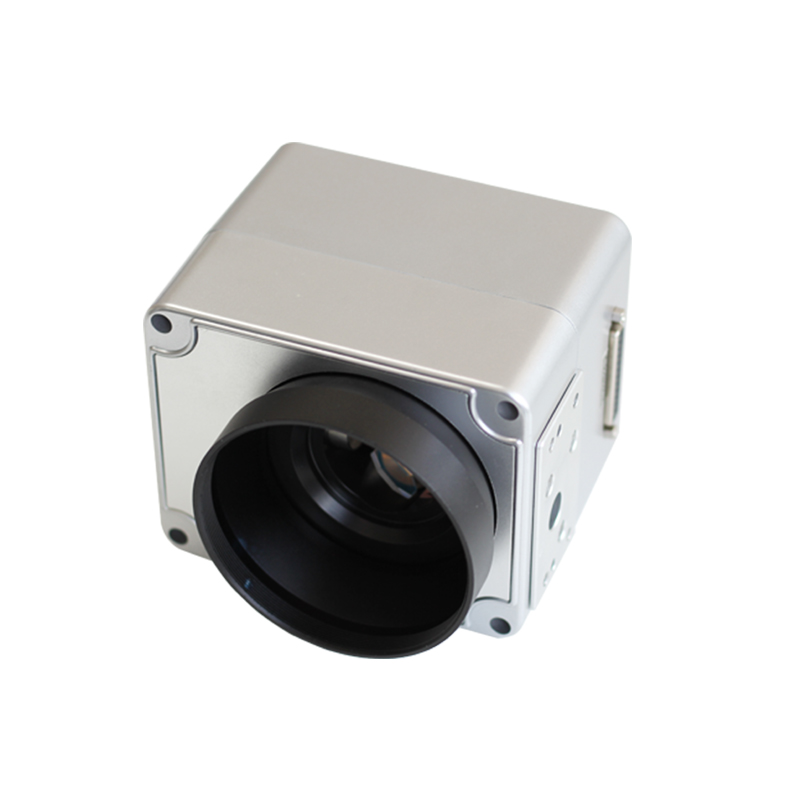Trick Applications of a Galvanometer Scanner in Different Scientific Research Fields
Galvanometer scanners have actually ended up being integral to different scientific research study fields, using enhanced precision in applications varying from biomedical imaging to environmental monitoring. Their capability to help with high-resolution imaging techniques, such as confocal microscopy, plays an important function beforehand our understanding of cellular frameworks. Additionally, in product handling, these devices boost the precision of laser cutting and welding. As we discover the complex applications of galvanometer scanners, it comes to be apparent that their impact expands much past mere technological abilities, elevating concerns regarding their future potential in emerging research locations.
Biomedical Imaging

In confocal microscopy, galvanometer scanners promote the acquisition of photos with boosted resolution and contrast, permitting researchers to visualize mobile parts in vivo. The capacity to rapidly catch multiple focal planes boosts the three-dimensional reconstruction of tissues, providing vital insights into their architecture and function.

In addition, the quick scanning capabilities of galvanometer systems add to innovations in dynamic imaging applications, such as monitoring cellular reactions to stimulations. Thus, galvanometer scanners are important devices in the field of biomedical imaging, progressing research and medical diagnostics with their accuracy and efficiency.
Material Handling
Accuracy in material processing is critical for attaining premium cause various industrial applications (galvanometer scanner). Galvanometer scanners play a vital duty in boosting this precision by allowing accurate and quick activity control during the processing of products such as ceramics, steels, and polymers. These gadgets help with techniques like laser cutting, welding, and engraving, which require finely-tuned modifications to make sure ideal outcomes
In laser cutting, for circumstances, galvanometer scanners permit elaborate designs to be performed with high integrity, reducing waste and improving production effectiveness. The fast movement capacities make it possible for quick modifications in the laser light beam path, which is important for preserving regular cutting top quality across varying material densities. In a similar way, in laser welding applications, the precision offered by galvanometer scanners makes certain solid joints with very little thermal distortion, consequently enhancing structural honesty.
Additionally, the versatility of galvanometer scanners to different laser types and wavelengths better expands their energy in product processing. Their capacity to operate in tandem with advanced software application for real-time tracking and control includes an extra layer of elegance, allowing suppliers to accomplish exact requirements customized to details applications. Therefore, galvanometer scanners are crucial in advancing the capabilities of material handling technologies.
Optical Characterization
In the world of optical characterization, the role of galvanometer scanners ends up being increasingly significant as they help with the evaluation of numerous optical buildings with high accuracy. These tools enable precise control redirected here of laser beam of lights, enabling researchers to systematically penetrate materials at several angles and regularities. This ability is important for identifying the refractive index, absorption coefficient, and scattering residential or commercial properties of varied materials.
Galvanometer scanners are specifically reliable in techniques such as optical comprehensibility tomography (OCT) and laser-induced fluorescence (LIF), where rapid scanning is vital. By achieving high-speed modulation of the laser position, galvanometer scanners enhance the temporal resolution of these techniques, bring about improved imaging and analysis. Additionally, they enable the exploration of complicated communications between light and matter, which is essential for comprehending product actions under numerous conditions.
Moreover, the assimilation of galvanometer scanners with spectroscopic techniques expands their energy, permitting detailed spectral analysis throughout a vast array of wavelengths. This convenience makes them vital devices in areas such as materials scientific research, biomedical research, and nanotechnology, where comprehensive optical characterization is critical for progressing knowledge and development.

Laser Micromachining
The introduction of laser micromachining has revolutionized producing processes, allowing the production of elaborate frameworks with unequaled accuracy. This strategy uses high-intensity laser light beams to precisely eliminate material from a substratum, making it feasible to produce micro-scale components that are vital in different markets. The application of galvanometer scanners in laser micromachining improves the performance and precision of this procedure by allowing quick and exact light beam positioning.
Galvanometer scanners facilitate the vibrant control of laser beams, making it possible for complex patterns to be etched or reduced with high fidelity. Their fast feedback times and high-resolution capabilities allow for the adjustment of laser pulses, which is vital for achieving the wanted product residential or commercial properties and surface area coatings. This innovation is particularly valuable in industries such as electronics, where the miniaturization of parts is crucial for performance enhancement.
Furthermore, laser micromachining is progressively being utilized in the medical field for producing precision instruments and implants. The mix of laser modern technology and galvanometer scanning not just enhances manufacturing operations yet also decreases waste and improves general material official source usage, making it a sustainable option for modern production obstacles.
Ecological Tracking
Environmental monitoring has come to be increasingly vital in examining and managing the health of ecological communities and urban settings. The assimilation of galvanometer scanners in this area makes it possible for specific, fast, and efficient information collection, facilitating far better decision-making processes. These scanners are experienced at routing laser beams or sensing units throughout numerous surfaces, enabling high-resolution mapping of ecological specifications such as air high quality, dirt make-up, and water contamination.
In air quality tracking, galvanometer scanners can be used to evaluate particulate matter and aeriform contaminants, supplying real-time data that notifies public wellness campaigns. For water quality assessments, these scanners can assist in identifying impurities and determining physical specifications, thus making sure conformity with environmental regulations. In remote sensing applications, galvanometer scanners improve the ability of satellite and drone systems to record detailed images and information of huge locations, determining eco-friendly adjustments and anthropogenic impacts.
The flexibility and accuracy of galvanometer scanners make them essential devices in environmental tracking, adding significantly to lasting advancement initiatives and the defense of natural deposits. As the need for efficient ecological management grows, the role of these advanced gadgets will most certainly expand additionally.
Final Thought
In recap, galvanometer scanners serve as essential tools across several scientific study domains. Their application in biomedical imaging enhances the precision of methods crucial for mobile visualization and diagnostics. In product handling, these scanners promote advanced laser cutting and welding processes, making sure very little distortion. Their role in environmental tracking emphasizes the value of exact data collection in attending to public health and wellness and environmental difficulties. The adaptability and effectiveness of galvanometer scanners remain to drive innovations in these critical areas.
In laser welding applications, the accuracy offered by galvanometer scanners makes certain solid joints with minimal thermal distortion, thereby enhancing structural look at this now integrity.
Furthermore, the flexibility of galvanometer scanners to various laser kinds and wavelengths even more expands their utility in product processing. By achieving high-speed inflection of the laser position, galvanometer scanners enhance the temporal resolution of these approaches, leading to improved imaging and analysis. The application of galvanometer scanners in laser micromachining boosts the effectiveness and precision of this procedure by enabling accurate and quick light beam positioning.
Galvanometer scanners help with the vibrant control of laser beam of lights, making it possible for complex patterns to be engraved or reduced with high fidelity.